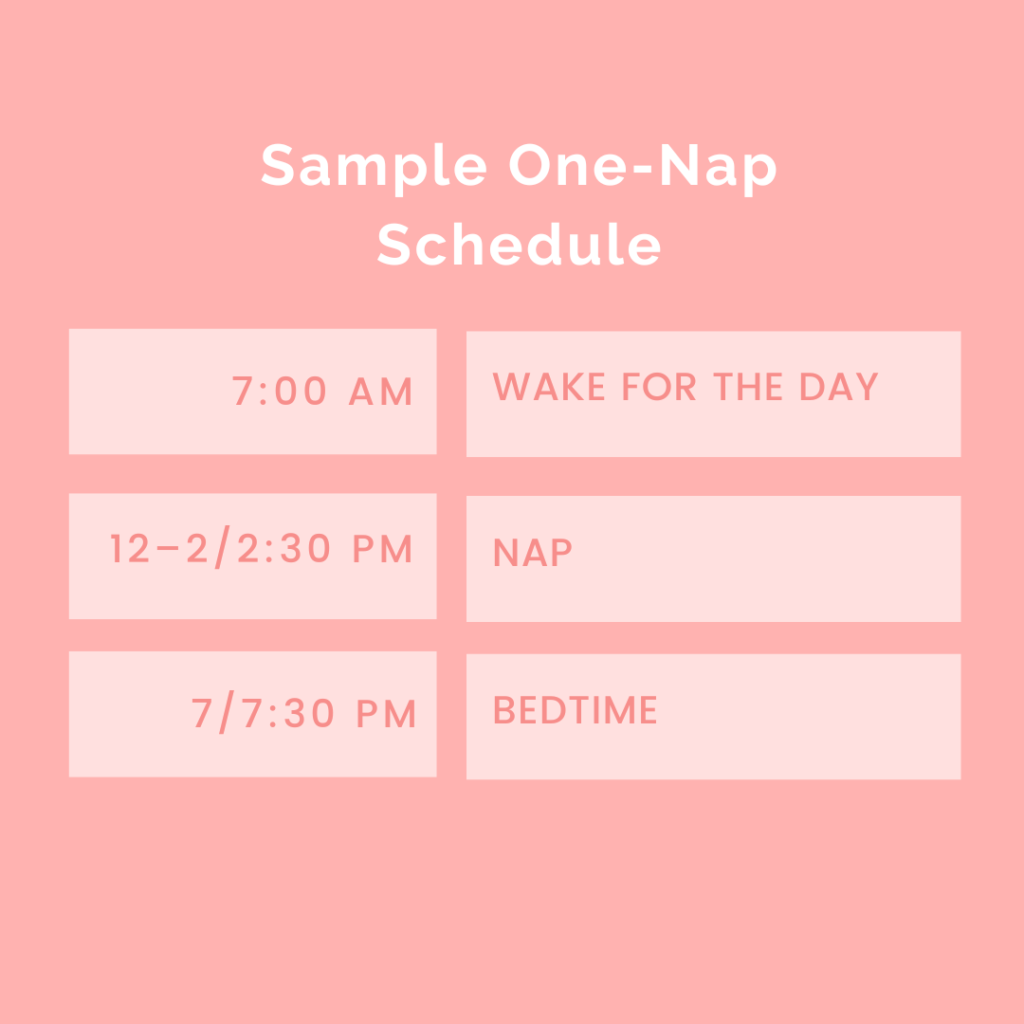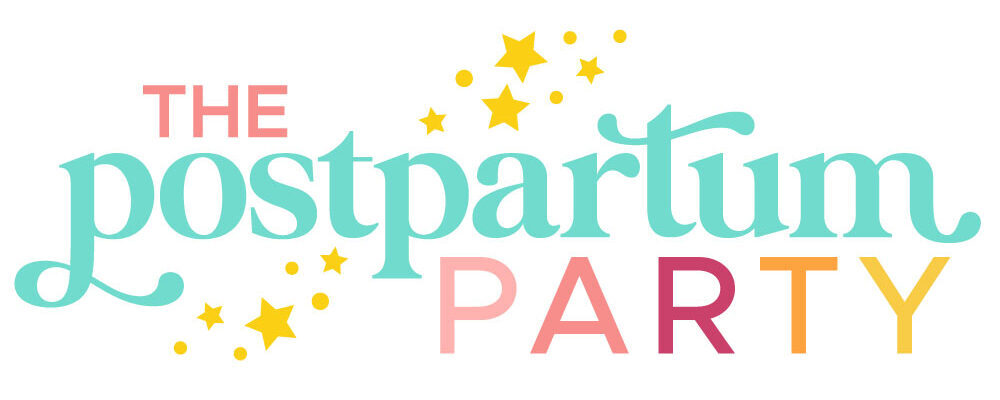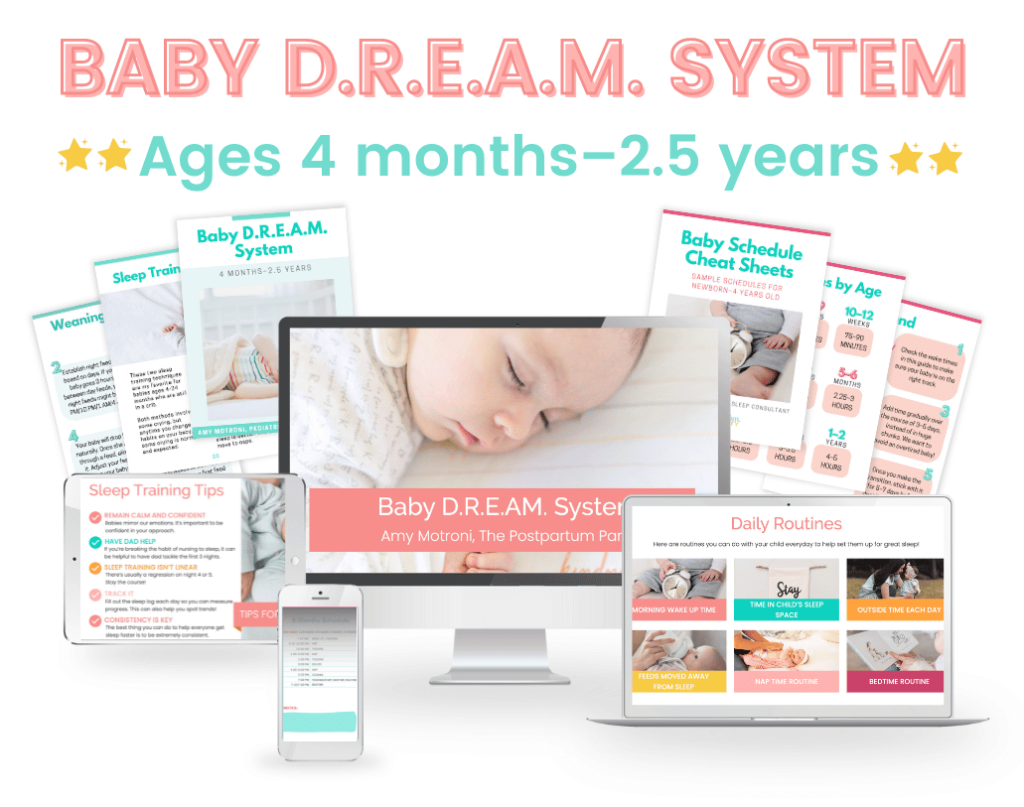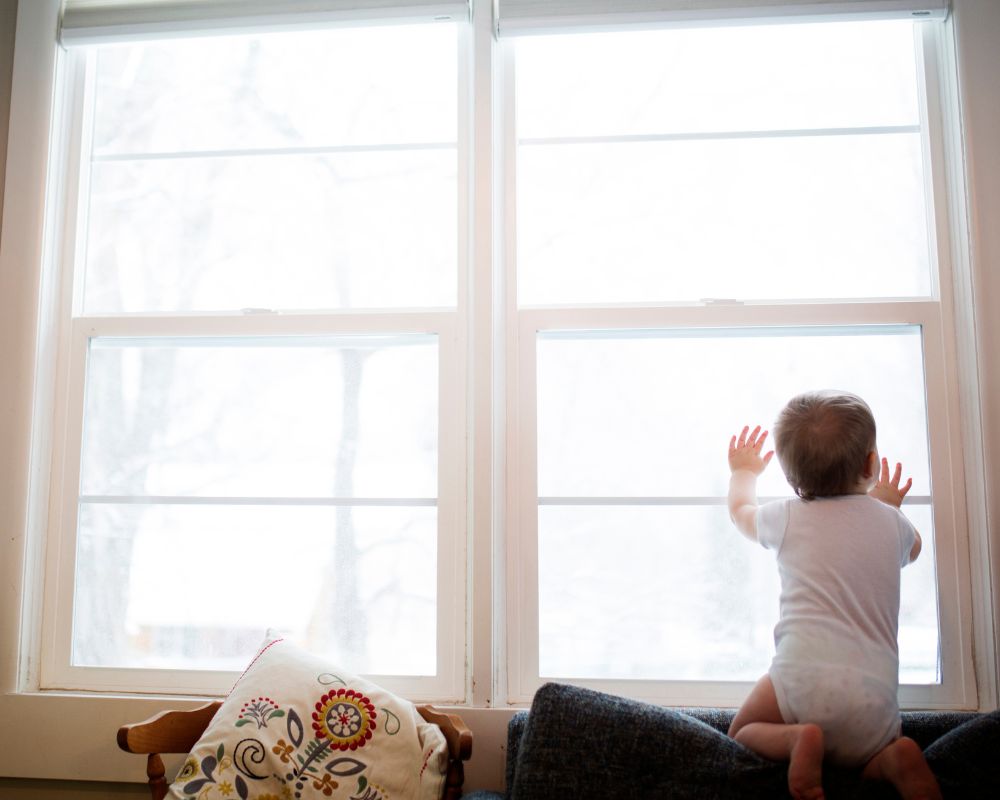Are you wondering when do babies drop to one nap? Here are signs to look for and how to know when your baby is ready to make the 2-to-1 nap transition.

Sometime after your baby’s first birthday, your young toddler will be ready to transition to one nap.
Many parents are intimidated by the one nap transition, but I’m here to help you through it!
The good news about this transition is it’s the last major schedule change you’ll make. Your baby will likely stay on their same one-nap schedule until he is ready to drop the nap altogether.
Transitioning from 2 naps to 1 can be one of the trickier nap transitions. Instead of extending your baby’s wake time by 15 or 30 minutes, you’re stretching it to hours, to get them on a new one year old schedule, which can be quite a stretch!
While many parents don’t love the idea of losing an entire nap time, the one-nap schedule gives you more time and flexibility to get out of the house for adventures.
After you make the transition to one long nap, you’ll have the morning and afternoon free, giving you a nice break while baby sleeps in the middle of the day.
Most toddlers will still sleep the same amount of time during the day (around 2 to 3 hours). Instead of taking two shorter naps, they’ll consolidate their daytime sleep into one longer nap.
Learn all about when babies go from two naps to one and how to make the transition to one nap.
Make sure to give your baby and yourself grace during the transition period, because it can be a tricky one!
To help you better, start by downloading my free baby sleep calculator to see when nap time and bed time should be based on your baby’s age. Click here to grab that, it’ll be super helpful.
When Should A Baby Go From 2 Naps to 1?
Most babies are ready to transition from 2 naps to 1 nap between 13 to 18 months. The average age to make the transition is 14 months.
There’s a lot of variation in babies’ development, and the 2-to-1 nap transition can happen anywhere between 13 to 18 months old.
Not only is that a pretty large window of time when your baby might hit this nap transition, but it can also be one of the longer transitions to make. This is a pretty tricky nap transition!
What makes this transition tricky is that you’ve got to stretch your baby’s awake time to four or five hours! That can be a really big change, especially when you’re used to adjusting wake windows in 15 to 30 minute increments.
Give yourself plenty of time to make this nap transition, and don’t expect it to take hold right away. You’ll most likely be dealing with some false starts and short naps as you make this sleep schedule change.
Most important of all: be patient! Once you get the one-nap schedule locked in, you won’t have to worry about any major sleep shake-ups for quite a wile.
There is a 12-month sleep regression that can make you think your baby is ready to move to one nap sooner. Make sure you don’t confuse a sleep regression with the need to drop a nap and transition to a single nap prematurely.
If your 10 or 11-month old is struggling with naps or night sleep, it’s likely a sleep regression and not time to transition to one nap. Most sleep regressions work themselves out within two to six weeks.
See a sample 10 month old sleep schedule and 11 month old sleep schedule here.
How Do you Know When Baby is Ready for One Nap?
So how do you know when your baby is ready to move to one nap?
The 2-to-1 nap transition can happen anytime between 13 to 18 months old.
Since that’s such a wide range of time in your baby’s development, it’s important to look for signs of readiness for the change.
There are common signs your baby is ready to drop the nap that are similar to a lot of the same signs he showed when you made the 3 to 2 nap transition.
Your baby may start fighting sleep and some of the signs that your baby is ready to transition to one nap include:
- Your baby is 12+ months old and begins to refuse their first nap, showing no signs of being tired and choosing to play in their crib instead.
- Your child isn’t ready for his nap at his normal time. He isn’t showing signs of being tired and is content to stay awake.
- A morning nap that is either consistently skipped or your child consistently falls asleep towards the end of it.
- If the morning nap remains great, look for an afternoon nap that is either skipped or shortened.
- Your baby starts waking up early from his nap. He may have taken 1.5 to 2 hour naps each day, and suddenly your baby only naps 30 minutes to an hour.
- Your baby’s naps seem all over the place. You may have gone from having a predictable, set nap schedule to a suddenly chaotic nap schedule.
- The afternoon nap can start to interfere with bedtime, pushing everything back.
- Your baby starts waking up early in the morning. If your baby was typically sleeping until 7 am and suddenly starts waking up in the early morning consistently, it may be a sign he is ready to transition to one nap.
- Bedtime becomes a battle. If your child starts resisting bedtime or playing in his crib after you put him to bed, he may be ready to drop a nap.
- Split nights: If your baby starts waking up in the middle of the night for a long period of time.
Those can be signs that your baby is maxing out on sleep. Dropping to one nap is sometimes the key to giving your baby enough awake time during the day and shifting that hour or two of sleep from the daytime back to the nighttime.
If your baby is between 13 and 18 months of age and showing these signs, then it’s time to transition to one nap with your baby. Don’t wait for the 18 month sleep regression to make the transition.
Get Better Sleep with The Baby D.R.E.A.M. System
If you want someone to walk you through the process of sleep training, let me help. The Baby D.R.E.A.M. System is for babies 4 months through 2.5 years old. I’ll walk you through how to establish daily routines, sleep schedules, and sleep training techniques to help you break the sleep associations you no longer find beneficial! Check it out here.
How Long Does it Take to Transition to One Nap?
How long the transition to 1 nap take really can vary from baby to baby.
The one-nap transition can be one of the trickier nap transitions, because if your baby doesn’t get enough sleep at their one nap, you don’t have any other daytime sleep to help make up for it.
Sometimes the transition goes quickly and only takes a week or two. Other times, there will be a bit of back and forth where sometimes baby just takes one nap and sometimes still needs two naps.
It may take a couple of weeks of short naps for your baby to adjust to the one-nap schedule. When your baby is transitioning to one nap, it’s common for them to only nap an hour or so at first.
If your baby’s naps are too short after making the transition, it’s normal!
If you followed the guidance on when to transition to one nap, don’t go back to two naps at this point. It takes time for your baby to adjust to the new schedule and settle into one long midday nap.
You can do an earlier bedtime to help make up for the lost sleep or try to squeeze in a car nap or stroller ride nap in the afternoon to help prevent your baby from becoming overtired. You can also practice crib hour and see if your baby will fall back asleep.
The good thing about the one nap schedule is that it means more awake time for your baby, which means more time for you guys to go out and have fun adventures together!
How Do I Transition My Baby to One Nap A Day?
Okay, once you’ve decided it’s the right time to make the transition, here’s how to do it!
Your end goal with a one-nap schedule is to have one nap that starts in the early afternoon, usually between 12:00-1:00 pm.
Here are three different ways to transition to one nap. Read through these and determine the best strategy for your family.
1. Gradually Extend Baby’s Wake Windows
It can be a bit of a little bit of a shock going from being on 3 hours of awake time in between naps to 4 or 5 hours all of a sudden, so for some families it’s a good idea to go slow with this transition.
For the first three days, push your baby’s morning nap back by 30 minutes. If your baby’s first nap was at 10:00 am, make the nap 10:30 am.
Continue using your nap routine to help cue to baby’s brain that it’s time for sleep.
Move your baby’s second nap of the day back by 30 minutes as well. If your baby was taking an afternoon nap at 2:30 pm, the new nap time is now 3:00 pm.
This second nap will be more of a cat nap and only last about 30 to 45 minutes. You can make this a stroller nap or car ride nap to help during the transition.
Do this for three straight days.
After 3 days, push the morning nap back again by another 30 minutes.
You’ll keep pushing the nap back every 3 days until you reach the new nap time, ideally between 12 and 1 pm.
Until you reach the later nap time, you may have to offer a catnap in the later afternoon or an early bedtime to help your baby from getting overtired and avoid new night wakings.
Don’t be afraid to move bedtime up by 60 minutes if the afternoon nap didn’t happen or both naps were short.
2. Shorten Baby’s First Nap
Another option is to cap your baby’s day sleep, which works well for many families.
Put your baby down at their normal morning nap time and make their morning nap a short nap by waking them up about 45 to 60 minutes later in hopes of preserving the afternoon nap.
Put them down for their second nap at the usual time in the hopes that capping their morning nap will help them take a second nap. If you need the second nap to be a stroller or carseat nap in order for it to happen, that’s okay.
Follow this approach until your baby can handle slightly longer wake windows.
3. Cold Turkey Approach
Another way to transition your child to one nap, is to find the new desired nap time and put your baby down at that time.
This is a good option if your child is on the older end, you don’t have time to slowly make the transition, or if your child tends to skip their morning nap more often than not.
Go ahead and move the afternoon nap to its new starting time and you are done.
You may need to pull out some tricks to distract your baby in the morning to keep him from falling asleep sooner than you intended.
Some children get a bit sleepy during the transition before their new nap time arrives. It can be helpful to take them to play outside, play some music, do some interactive play, or offer a snack to distract them and help them make it to naptime.
I always found that going outside helped my daughter. They may seem very tired initially, but they’ll get a bit of a second wind once they make it over their old wake time hump.
Bedtime can also be brought up with the cold turkey approach until your baby can meet the new wake windows without a meltdown at the end of the day.
In either approach when you transition to one nap, the nap may be short at first. It’s not uncommon for babies to take an hour nap at first and it may take your baby some time to consolidate his sleep and get a good 2 to 3 hour stretch with one nap.
If you’re having trouble getting your baby to extend their nap, after giving them some time to adapt on their own, you can use one of the sleep training methods.
Is 10 Months Too Early for One Nap?
Yes, 10 months is much too young to transition to one nap. That’s because at 10 months old, it’s developmentally appropriate for babies to stay awake about 3 to 3.5 hours at a time. An optimal 10 month old sleep schedule will still contain two naps.
If your 10 month old (or even your 11 month old!) is all of the sudden having trouble sleeping, it’s most likely the 10 month sleep regression. It doesn’t mean it’s time to transition to one nap.
Is 12 Months too Early for 1 Nap?
The most common age for babies to transition to one nap is 14 months old. Some babies, especially those who sleep well at night, may be ready to make the transition as early as 12 months and others won’t be ready until closer to 18 months old.
While some babies may be ready to take the 2 to 1 nap transition by the time they are 12 months old. But for the majority of babies, it’s probably still a little too early.
You’ll want to make sure that you’re not mistaking a sleep regression for a sign that your baby is ready for only one nap. And unfortunately, there is a common sleep regression than can happen around baby’s first birthday!
The 12 month sleep regression can make you think that your baby is done with their two nap schedule, but it still might be a little premature to make the change.
Transition to One Nap At Daycare
Often, daycares will move children to the toddler room at their first birthday, and the toddler room usually comes with a 1 nap schedule.
If this is the case with your child and you feel like your child isn’t totally ready, don’t panic! You can do a few things to help bridge the gap between the move to the toddler room and your child being ready for the toddler schedule.
If your toddler goes to daycare, they will usually handle the nap transition for you. I would recommend starting the transition on a weekend while you can work toward those later wake times and let daycare take it from there.
Kids often sleep better at daycare anyway, especially once they are on that one nap schedule.
If your child is overtired in the evening, you can bring bedtime a little earlier if possible. This can help keep your child from becoming overly tired from the missed daytime sleep. Your child may nap longer on the weekends to make up for it, and that’s okay too.

One Nap Sample Schedule
Remember, it is normal to take a few weeks to transition and for your new schedule to feel like smooth sailing.
With a bit of time and patience, you and your baby will make it through the one nap transition.
Here’s a sample one nap schedule that you’ll stick to once you make the transition. At this point, don’t worry about wake windows. You’ll keep your baby’s nap the same time each day.
If your child is falling asleep within about 10-15 minutes, that is a great sign you have found the sweet spot for nap or bedtime.
On the one-nap schedule, your toddler will get about 14 to 15 hours of sleep in a 24-hour period.
7:00 am: Wake up and nurse/bottle
8:00 am: Solids/Breakfast
11:30 am: Solids/Lunch
12:00–2:00/2:30 pm: Nap
3:00 pm: Snack
5:30 pm: Solids/Dinner
6:30 pm: Start baby’s bedtime routine
7:00/7:30 pm: Bedtime
The beauty of the one nap schedule is that you are almost done with nap transitions! Your baby will stay on the one-nap schedule until it’s time for him to drop the nap completely and move to quiet time, usually around 3 or 4 years old.
When Do Babies Drop Naps Completely?
You may be surprised to learn that kids can benefit from a daily nap until they’re up to four years old! I encourage parents to keep offering a nap until your toddler is at least three.
When parents tell me their two year old seems ready to drop their daily nap, I tell them wait and to keep offering the nap (or, at the very least, a midday quiet time).
Even if your toddler goes on a two year old nap strike, they’ll probably come back around to naps again if you create the space and time for it.
When it comes down to it, whether or not your toddler naps can really impact how well they sleep at night. Good daytime rest means your little one will sleep better at night, too.
- Baby Led Weaning vs Purees — Which Should I Choose? - April 25, 2024
- 10 Adorable Letter Board Pregnancy Announcements - April 25, 2024
- 30 Festive Fall Pregnancy Announcements - April 25, 2024








